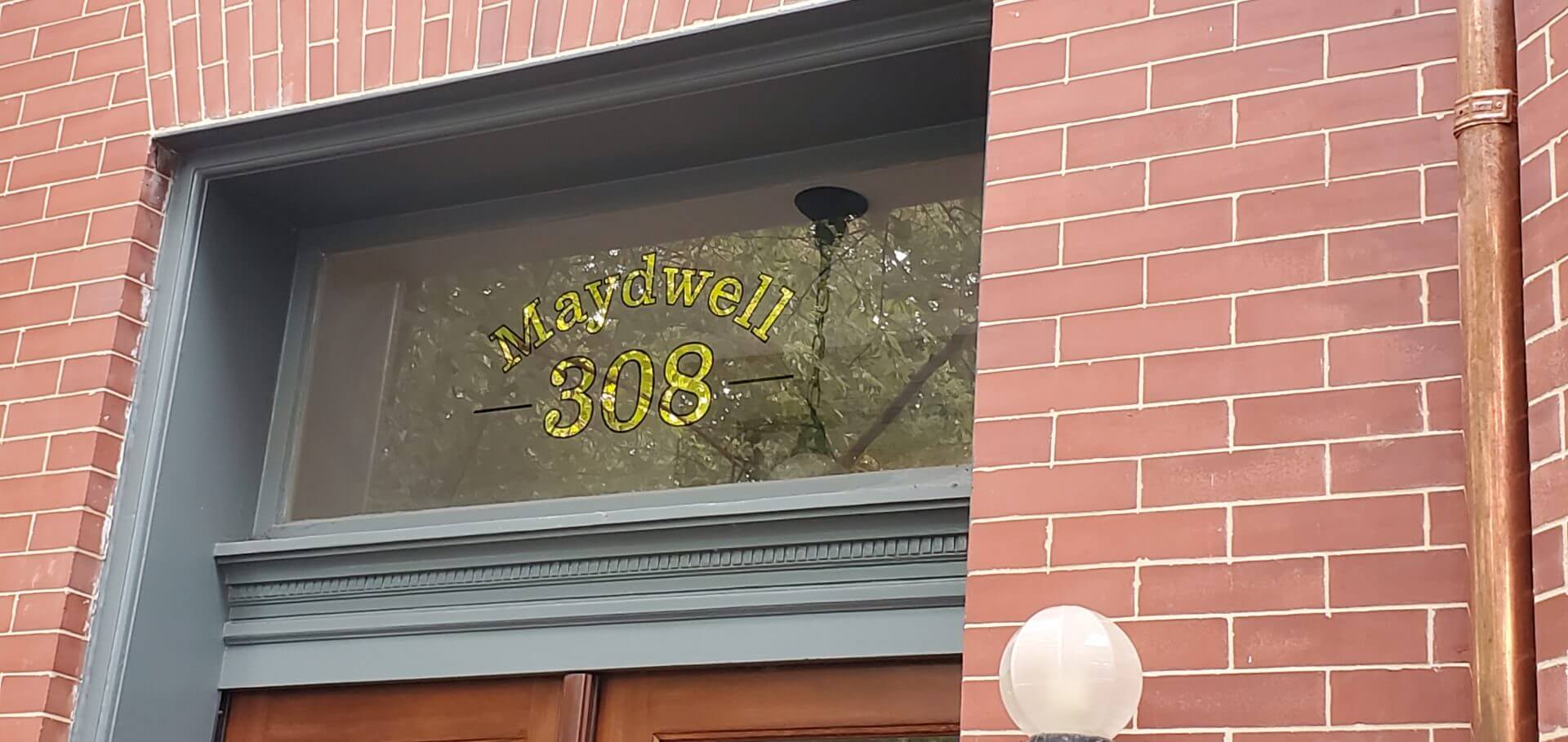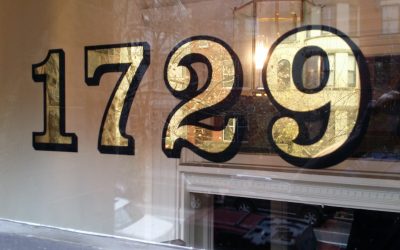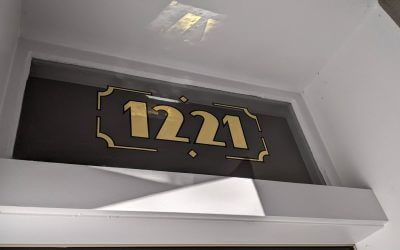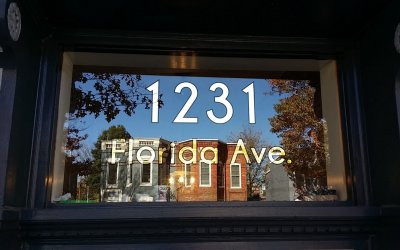Gilding on glass in Washington, DC
This 308 gold transom address in the District of Columbia begins with thoroughly cleaning the glass to ensure the surface is free of debris. Any debris left behind on the surface can be potentially disastrous once the gilding process begins. Next, the outline of the address or design is applied to the glass. The outline must be placed in the center horizontally, as it will likely be noticeable to anyone viewing the address from the exterior. The gold transom address is also usually placed slightly above the vertical center, due to the address being viewed from a lower height than the actual transom. Once the positioning of the outline is complete, the actual process can begin.
The gold size (adhesive liquid) can now be applied, and the gold leaf must be applied immediately afterward. If there is too much of a delay in the application of the gold leaf, it will not adhere properly. After the gold has been applied and there are no holidays (empty spots), the back-up paint (typically black) is used to put a protective layer over the fresh gold leaf. When this step is completed, the excess gold from outside the desired area is carefully wiped away. What remains is a completed and exquisite gold transom address.
History of the Verre églomisé process
The term Verre églomisé is derived from the name of Jean-Batiste Glomy. Jean-Batiste was an 18th-century French decorator and art dealer who lived from 1711-1786. The process of gilding on glass began as a relatively simple one. Glomy’s technique involved applying decorative designs in a combination of plain color and gilding to glass picture frames. Over the past few centuries, this process has come to describe nearly any process that involves back-painted and gilded glass.
Back-painting glass dates back to pre-Roman times. However, one of the key periods of this art occurred in Italy between the 13th and 16th (1400-1700) centuries. In addition, this process has also been used throughout Europe beginning in the 15th century. It has often been seen in decorative panels of mirrors and clock faces. More recently, this technique can be seen in window signs such as addresses, and advertising mirrors.
Please take a moment to visit and follow us on Twitter @DesignsandSigns
